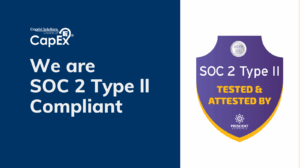The often-said idiom goes something like this, “When everything runs smoothly, it’s hard to measure character; it’s the hard times that show us who we are.”
Life is being disrupted now more than ever before. Many of us are dealing with a setback to our business and financial goals because of the global epidemic. Thoughts of caution aside, this is not the time to back off.
We need to be agile, fast to react, and adapt to an environment that makes it difficult for us to predict what will happen tomorrow, in a month, or in a year. To become risk-resilient, we must have systems in place that will guide us in making the best choices based on capital models and investment strategies.
Better judgement is required in these circumstances. It will be easier to assure that there will be cashflow to be resilient in a bad period by using data to identify which projects to halt, slow down, or defer entirely.
There needs to be a methodology for building a risk-resilient cash plan.
CFOs must develop approaches that deviate from risk aversion to create a risk-resilient cash plan in response to COVID-19. And when you combine sound reasoning with discipline to produce wiser decisions, this is what happens.
Your finance team can use a framework to create a risk-resilient plan that will improve understanding, planning, and mitigation of factors that will affect CapEx and portfolio management in an unprecedented time.
Let us look at three principles for accelerating long-term performance in times of financial difficulty.
1. Defining the Bottom Line
We are more equipped to deal with potential blows to our operations, such as losses in profits, cash flow, and costs, when we closely examine the problems and comprehend how the crisis affects our business model.
All potential financial effect possibilities are part of the criteria you need to consider. Now is the moment to consider risk awareness, which entails attempting to forecast financial flows.
Making sure you have cash flow for daily working capital, such as customers, workers, and partners, should be your first concern. This is crucial to track because CFOs must weigh the trade-offs between risk mitigation and cash strategy optimization to survive and thrive after a pandemic.
2. Figuring out the Right Move with Data
Unprecedented times require us to consider potential hazards, which makes us risk averse. Therefore, developing risk resilience aids in improving the ability to foresee potential negative events.
Innovative finance teams are assembling a cross-functional team of stakeholders who are aware of major and evolving threats and how to be ready for them.
If you do not already have a team, you should determine who the ideal candidates are to join it: C-level executives, clients, managers, and regulators. All these stakeholders bring their own perspectives and areas of expertise, and they may collaborate to identify risks and create what-if scenarios to help investors make more informed investment decisions.
You can get closer to making wise selections by doing some brainstorming on potential outcomes and different circumstances. When there are so many variables in a web of so many components, complex times provide the perfect environment for blunders. Therefore having a structure in place is essential when deciding which investments to make in order to get through crises.
Businesses that use data analysis to create backup plans and foresee scenarios are doing the right thing to avoid falling victim to cognitive biases.
A worst-case scenario plan can be supported and given form by framing a risk process. Consider the possibility that we may be assuming the wrong thing. How did we arrive at this situation? And what can we do right now to better prepare for it?
3. Deciding which Direction to Take
Granular data analysis will reveal the risks, empowering CFOs to adopt the best possible business plans for the company by allowing them to make logical, prioritized decisions. To guarantee that the proper course of action in CapEx investment and management is taken, you can discover the what-if scenarios when you evaluate where to deploy resources.
You can focus on which capital plans to consider and free up the necessary working capital for your business by employing a risk-resilient strategy.
You will have a better understanding of the dangers involved by thinking about investments or delaying them until a situation like COVID-19 improves. When choosing when and where to invest, how much to invest, and when and where to withdraw, you will be more informed.
In conclusion…
A capital spending strategy must be in place and be approved by your CFO and finance staff. Where to halt, postpone, or scale back capital projects during COVID-19 and beyond needs to be thought out. What would happen if we did not fund this project? Would there be repercussions? What choosing one course of action over another will achieve a project’s most important objectives?
Through risk analysis, you may become a risk-resilient organization—one that is risk-aware rather than risk-averse. Now is the time to choose where to spend your money more wisely. You will be more prepared for challenging events outside of this epidemic.





